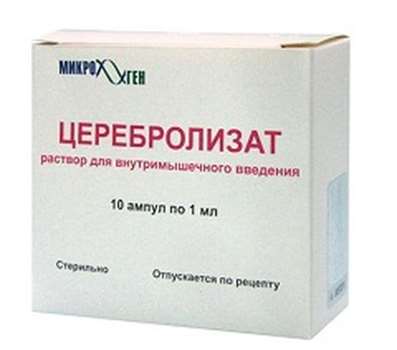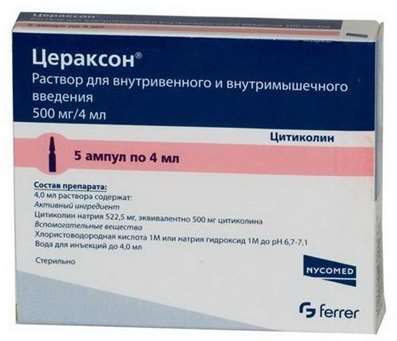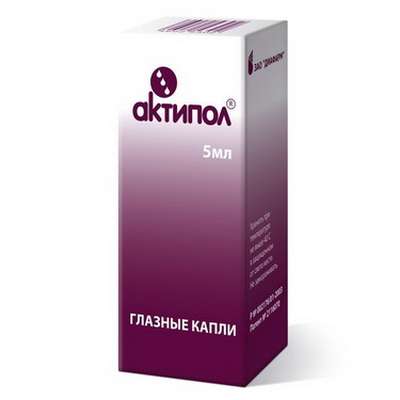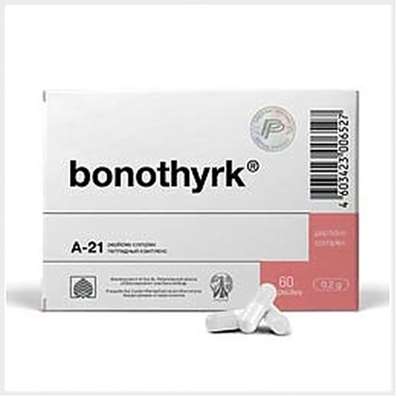Possibility of Mildronate In Neurological Practice
10 Oct 2016
Currently, the incidence of the population of world is characterized by severe comorbidity, in the event of a significant role to the combination of risk factors such as obesity, smoking, alcohol abuse, acquired hormone deficiency, diabetes. This situation reflects the severity of comorbidity based on gender-specific and age-specific. This, of course, creates difficulties in correcting multiple organ disorders that arise under the influence of these factors determines the real difficulties of medical correction and the selection of appropriate drugs.
From this viewpoint noteworthy cyto-protectors who by definition no favorite targets, they are able to prevent the effects of negative influences damaging agent on cell viability and influencing the local sites of tissue respiration and metabolism, significantly improve tissue tolerance to damaging factors (ischemia, hypoxia, stress, alcohol, or toxic damage). In conditions of normal myocardial perfusion and brain the main source of energy is the utilization of free fatty acids (FFA), which was first established value R.J. Bing (1953-1965), and confirmed in subsequent numerous studies (J.C. Shippetal, 1961; L.H. Opie, 1968; J.R. Neely, H.E. Morgan, 1974). In the heart during ischemia and adrenergic effects carnitine-dependent metabolism of fatty acids with accumulation of free fatty acids and oxidized metabolites - long-chain acyl-CoA and acyl-carnitine (AI Toleyskis et al, 1986; BZ Simkhovich 1988; FE Hulletal, 1975. AL Shugetal, 1978). Long chain acylcarnitine inhibits Na + -K + ATPase, Ca2 + enhances the release from the depot to the cytoplasm, inhibits Na + - Ca2 +-exchange (J.M. Woodetal, 1977; R.J. Adamsetal, 1979; J. McMillan-Woodetal, 1977). This fact is characterized in that the SLC recycle gives maximum output energy per unit of the substrate, and the complete oxidation of one palmitic acid molecule formed 134 ATP, and stearic - 147, while the aerobic oxidation of one molecule of glucose - 32 ATP molecules, while anaerobic glycolysis - only 2 (AL Shugetal, 1975). When using the substrate as an SLC cell energy efficiency is 30% higher than with glucose, but their disposal is associated with a higher oxygen consumption and therefore ischemia preferred substrate glucose oxidation becomes.
Oxygen deficit in cardiomyocytes (CMC), not only promotes the accumulation of intermediate FFA metabolism products - acylcarnitine, acyl-CoA, but inhibition of pyruvate dehydrogenase, thus eliminating the possibility recycling pyruvate, whereby it is almost completely converted to lactate, which accumulates in the cytosol, together with H +, leads to a decrease in intracellular pH and impaired function of CMC. In addition, the intermediate products of metabolism FFA inhibit adeninnukleotidtranslokazu mitochondria and impedes the transfer of energy phosphates through their membrane, helping to reduce the energy shortage CMC and further activation of glycolysis. Intensity of these processes increases with increasing severity of the disease process that contributes to the emergence of severe acidosis, which is combined with the development of first functional disorders, and later with the death of myocardial cells due to cell membrane damage (F.C. Messineoetal, 1982). The most important mechanisms of the damaging effect of free fatty acids include:
1) inhibition of glucose utilization;
2) uncoupling of oxidation and phosphorylation in the electron transport chain of mitochondria;
3) changes in the properties of the membrane enzymes with a decrease in membrane permeability;
4) inhibition of mitochondrial function and ATP synthesis rate;
5) increase in membrane permeability to calcium ions and the associated gain-adrenergic response of the affected tissue.
The emerging tissue lactic acidosis causes the uncoupling of oxidative phosphorylation and overload CMC calcium ions, activates phospholipase A2, followed by the initiation of lipid peroxidation and damage to membrane structures (S.V. Pande, M.C. Blanchaer, 1971; A.L. Shugetal, 1975). Thus, in the absence of early reperfusion first reversible metabolic inevitably become irreversible and lead to cell death.
In the treatment of patients with coronary heart disease (CHD), traditional approaches aimed at improving the delivery of oxygen to the cells of the myocardium and reduce their need for it. Adrenoceptor blockers, nitrates and calcium antagonists have antianginal by changing hemodynamic parameters (heart rate and force of contraction, improving coronary blood flow, reducing pre- and afterload on the heart, etc.). This group of drugs although it can prevent angina, but is not able to completely prevent the occurrence of myocardial infarction episodes and protect CMCs from ischemic changes. Coronary artery bypass surgery and coronary angioplasty also do not solve the problem, since 2/3 of the coronary artery disease persists after surgery.
The solution to this problem was the definition of "metabolic remodeling of the myocardium" in chronic heart failure in patients with ischemic heart disease, which includes:
1) changes in the energy metabolism of the myocardium associated with cellular energy deficiency, dysfunction of mitochondria and switching myo-infarction recycling FFA;
2) changes in the activity of intracellular enzymes that perform regulatory functions (NO-synthase, protein kinase C, mitogen-activated kinases, etc.).;
3) changes in the ionic homeostasis CMC, particularly deposits and intracellular release of calcium ions;
4) molecular changes CMC with strengthening their apoptosis;
5) violation of the system of nuclear transcription factors that regulate expression of a variety of intracellular proteins;
6) changes in the metabolic activity of the intercellular substance of the myocardium with increased collagen formation by fibroblasts.
Hence the usefulness of myocardial cytoprotection as a new approach in the treatment of this disease in order to protect from the effects of ischemia CMC.
For the implementation of corrective actions on carnitine-dependent metabolism of fatty acids in conditions of ischemic damage and adrenergic Institute of Organic Synthesis, Academy of Sciences of the Latvian SSR was offered a drug that inhibits beta-oxidation of fatty acids carnitine-dependent metabolism of fatty acids - Mildronate. A detailed study of the mechanism of action of Mildronate in ischemic conditions and adrenergic effects produced by specialists of the Institute and most fully reflected in the doctoral thesis BZ Simhovicha (1988). The mechanism of action is to inhibit Mildronate butyrobetaine hydroxylase enzyme that catalyzes the last step of the biosynthesis of carnitine butyrobetaine in the liver, kidney and testes. Thus, according to TN Well done and JV Shutenko (1989) Mildronate course administration at 400 mg / kg for 10 days causes a decrease in the content of free carnitine in the liver in 5.2 times. This in turn leads to a decrease in the content of free carnitine in the heart of rats, where it is transported from the synthesis places, and long-chain acylcarnitine (IA Priede, JV Shutenko, 1989). This study was the basis for the widespread use Mildronate to correct heart damage in ischemic conditions and adrenergic effects.
YA Sutulov et al. (1991) found a cardioprotective effect of Mildronate stress in experimental myocardial injury. It is also proven to increase the electrical stability of the myocardium under electrical stimulation of the myocardium in the preliminary application Mildronate (VA Luce et al., 1991). In experiments conducted by TM Ratunovoy, VR Bauman and IJ Kalvins (1989), term application of the drug to the experimental occlusion of the coronary artery in rats by 35 and 37% prevented the decrease in ATP and AMP and 30% - reduction in the overall pool of adenine nucleotides, and the course administration of Mildronate in doses of 100 and 200 mg / kg per os contributed to the preservation of ATP and CP under adrenergic effects (BZ Simkhovich, 1988). In the heart, the ECG data, noted only minor ischemic changes and prevents the accumulation of long-chain acylcarnitine and acyl-CoA.
Correction of metabolic Mildronate under application helps protect myocardial contractile function when combined effects of fatty acids, and ischemia reperfusion. According to JL Briede et al. (1989), during post-ischemic reperfusion palmitic acid recirculation rate of contraction and relaxation of isolated hearts in the conditions of use Mildronate reached the initial values and significantly exceeds the same index in the control animals. In studies of BZ Simhovicha in the hearts of rats was performed in which the regulation of metabolism via carnitine-dependent Mildronate not occurred increasing diastolic perfusion FFA in ischemia and reperfusion. In control animals developed pressure during all periods of reperfusion was lower compared to the hearts of rats treated with the drug. Finally, the regulation of metabolism carnitine-dependent led to a much more favorable dynamics of the velocity reduction and relaxation of the heart in the reperfusion period.
Mildronate has cardioprotective effect has been shown in respect of isolated atria of rabbits subjected to anoxia, which was reflected in a more rapid recovery of contractile function during re-oxygenation. Course application Mildronate largely protected the heart from abnormal calcium metabolism in the conditions of immobilization stress (BZ Simkhovich et al., 1988) and 42% reduced the epinephrine caused an increase in serum CK activity and LDH - 85% (B. Z. Simkhovich, 1988). The results of pharmacological studies reveal an extremely low toxicity Mildronate both in a single administration, and with repeated use for a long time (MM Veveris et al, 1991;.. IO Peterson et al, 1991).
Mildronate and Coronary heart disease with stable angina
Since the blood loss, the conditions for adrenergic cardiac lesions, we should expect violations carnitine-dependent way of fatty acid oxidation in the heart and the effective use of Mildronate in shock conditions that would be a confirmation of the importance of the pathogenetic mechanism of damaging the heart and perspective directions pharma-correction of violations of violations in terms of blood loss, and shock.
It should also be borne in mind that on a background of standard antianginal therapy (beta-blockers and nitrates) in patients with stable angina II-III functional class addition Mildronate led to an improvement in both subjective and objective measures (reduction of myocardial ischemia according to the stress test on a bicycle ergometer, and a positive impact on myocardial perfusion according to SPECT myocardium with 99m-Tc-MIBI (methoxy isobutyl isonitrile) after 6 weeks of treatment.
Mildronate, along with Trimetazidine, is one of the true myocardial cyto-protection, has antianginal effect and the ability to increase the strength of heart contractions. Earlier studies Mildronate dealt mainly with the treatment of patients either stable angina or heart failure, while often a combination of these pathologies in clinical practice. Therefore VE Mitrokhin et al. (2003) in their work assessed the clinical efficacy and safety of a course of treatment of patients with angina Mildronate depending on the presence or absence of manifestations of chronic heart failure. The study shows that Mildronate is highly effective and safe means of therapy for patients with a combination of stable angina and chronic heart failure class II. 20-day course of therapy has helped to achieve significant clinical improvement in the majority of patients examined, including improving the quality of life.
In another study on the basis of the Chelyabinsk State Medical Academy, led by Professor Shaposhnik evaluated the efficacy of treatment with a combination of Mildronate patients with coronary heart disease and vascular encephalopathy.
The treatment regimen consisted of:
- Mildronate 500 mg / day intravenously for 10 days, then into 30 days (10 days in the hospital, 20 days - on an outpatient basis).
As a result of the conclusion was made that the addition of Mildronate led to an improvement in both subjective and objective measures of myocardial ischemia and positively influence the process of functional recovery of damaged brain.
Osteoarthritis in combination with hypertension and Mildronate (Meldonium)
Osteoarthritis (OA) - one of the most common diseases of the joints, especially in the older age groups, characterized by severe pain, significantly reduces the motor activity of patients, leading to a significant deterioration in the quality of life and disability of patients.
Expressed pain syndrome leads to fatigue and anxiety and depressive symptoms, which may contribute to the development and worsening of hypertension. Increasing the activity of the inflammatory process in rheumatic diseases leads to endothelial dysfunction, which contributes to an increase in peripheral vascular resistance, decrease in blood flow velocity parameters and increase in variability and blood pressure (BP), increased pressure load on the heart.
With today's position OA is treated as a metabolic disease of the articular cartilage due to unbalanced processes and repair of cartilage degradation. The major importance in the pathogenesis of OA is a violation of the connective tissue metabolism, in particular collagen, which is a marker of hydroxyproline (OP). Information about the violation of collagen metabolism in patients with OA are scarce and contradictory, and in hypertensive disease (HD) is generally rare. As for the data on changes of hydroxyproline metabolism in conjunction with OA GB, they are non-existent. Equally important in the pathogenesis of OA is given activation of lipid peroxidation (LPO), which results in the release of proinflammatory cytokines, disturbance of microcirculation, and the structure of collagen contributes to the progression of the degenerative process in joint tissues. POL products also cause damage to the vascular endothelium, arterioles spasm and increase in total peripheral resistance, which can increase blood pressure in patients with OA and reduce the antihypertensive effect of antihypertensive drugs in patients with the combination of OA and GB. Moreover, activation of lipid peroxidation in patients with a combination of OA and GB can not only contribute to OA, but also the AG.
In patients with a combination of hypertension and OA may arise from GB treatment problems as nonsteroidal anti-inflammatory drugs commonly used in the treatment of OA, can contribute to increase or decrease the blood pressure effects of many antihypertensive medications. All this determines the need to find new treatments for OA, which on the one hand, enhance the effectiveness of treatment, and on the other - will not have a negative effect on blood pressure and counteract the effects of antihypertensive drugs in patients with the combination of OA and hypertension.
Considering the pathogenesis of OA and hypertension, the use Mildronate is promising because the drug activates energy processes in the cells, reduces lipid peroxidation, preventing damage to cell membranes, reduces muscle tone, reduces the symptoms of mental and physical stress. Application GB Mildronate the treatment is justified by the fact that it has the ability to increase nitric oxide production and normalize vascular tone, without causing effect on normotensive vessels. In patients with a combination of osteoarthritis and hypertension Mildronats potentiates the hypotensive effects of antihypertensive agents.

 Cart
Cart





